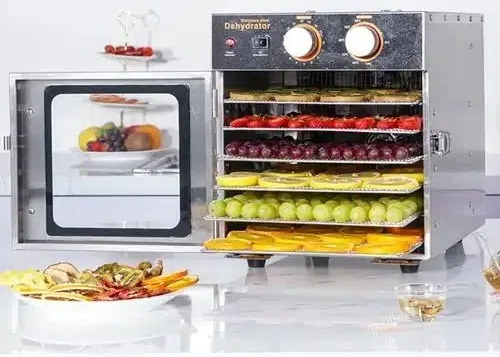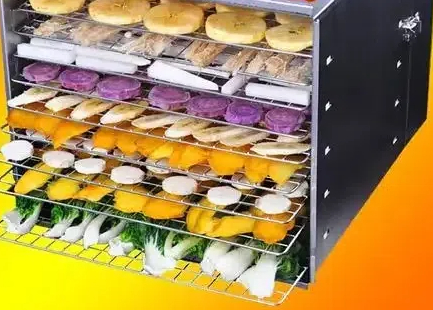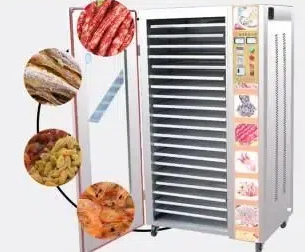
Content Menu
● Introduction
● Understanding Heat Pump Dryers
● Advantages of Heat Pump Dryers in Food Processing
● Applications of Heat Pump Dryers in Food Industry
● Challenges and Considerations
● Future Trends in Food Drying Technology
● Conclusion
● Frequently Asked Questions
>> 1. What is a heat pump dryer?
>> 2. How does a heat pump dryer improve food drying efficiency?
>> 3. What types of food can be dried using heat pump dryers?
>> 4. Are heat pump dryers suitable for commercial use?
>> 5. What are the environmental benefits of using heat pump dryers?
Introduction
Food preservation is a critical aspect of the food industry, ensuring that products remain safe and nutritious for consumption over extended periods. One of the most effective methods of preservation is drying, which removes moisture from food, inhibiting the growth of spoilage-causing microorganisms. In recent years, heat pump dryers have emerged as a revolutionary technology in the food drying process, offering enhanced efficiency and sustainability. This article explores the role of heat pump dryers in improving food drying efficiency, their advantages, applications, and future trends.

Understanding Heat Pump Dryers
Heat pump dryers operate on a principle similar to that of air conditioners and refrigerators. They utilize a closed-loop system that circulates refrigerant to absorb moisture from the air inside the drying chamber. The moisture-laden air is then passed over a condenser, where it is cooled, causing the moisture to condense and be collected. The dry air is reheated and returned to the drying chamber, creating a continuous cycle that effectively removes moisture from the food.
Compared to traditional drying methods, such as convection or solar drying, heat pump dryers offer several advantages. They operate at lower temperatures, which helps preserve the nutritional quality and flavor of the food. Additionally, they do not require external venting, making them suitable for various installation locations.
Advantages of Heat Pump Dryers in Food Processing
One of the most significant benefits of heat pump dryers is their energy efficiency. These dryers consume approximately 50% less energy than conventional dryers, leading to substantial cost savings over time. For businesses in the food industry, this translates to lower operational costs and increased profitability.
Moreover, heat pump dryers provide improved drying quality and consistency. The controlled environment within the dryer ensures that food is dried evenly, reducing the risk of over-drying or under-drying. This consistency is crucial for maintaining product quality, especially in commercial applications where uniformity is essential.
From an environmental perspective, heat pump dryers contribute to sustainability efforts. By reducing energy consumption, they help lower greenhouse gas emissions associated with food processing. This aligns with the growing demand for eco-friendly practices in the food industry.

Applications of Heat Pump Dryers in Food Industry
Heat pump dryers are versatile and can be used in various applications within the food industry. They are particularly effective for drying fruits, vegetables, herbs, and meats. For instance, dried fruits such as apples, bananas, and strawberries retain their flavor and nutritional value when dried using heat pump technology.
Several case studies highlight the successful implementation of heat pump dryers in commercial food processing. For example, a fruit processing company reported a significant increase in production efficiency and product quality after switching to heat pump drying technology. The ability to dry large batches of food consistently has made heat pump dryers a preferred choice for many food manufacturers.
Challenges and Considerations
Despite their advantages, heat pump dryers also come with challenges. The initial investment for purchasing and installing a heat pump dryer can be higher than traditional drying methods. However, the long-term energy savings often justify the upfront costs.
Maintenance is another consideration. While heat pump dryers are generally low-maintenance, regular servicing is essential to ensure optimal performance. Additionally, operators must be trained to understand the technology and troubleshoot any issues that may arise.
There are also limitations to consider. Heat pump dryers may not be suitable for all types of food products, particularly those that require rapid drying or have high moisture content. Understanding the specific needs of the food being processed is crucial for selecting the right drying method.
Future Trends in Food Drying Technology
The future of food drying technology is promising, with ongoing innovations in heat pump technology. Manufacturers are continually developing more efficient models that offer enhanced performance and lower energy consumption. Additionally, the integration of automation and smart technology is expected to revolutionize the food drying process, allowing for real-time monitoring and adjustments to optimize drying conditions.
As the demand for sustainable food preservation methods grows, heat pump dryers are likely to play a pivotal role in shaping the future of the food industry. Their ability to provide energy-efficient and high-quality drying solutions positions them as a key technology in food processing.
Conclusion
Heat pump dryers represent a significant advancement in food drying technology, offering numerous benefits in terms of efficiency, quality, and sustainability. As the food industry continues to evolve, adopting innovative drying solutions will be essential for meeting consumer demands and environmental standards. By leveraging the advantages of heat pump dryers, food manufacturers can enhance their operations and contribute to a more sustainable future.

Frequently Asked Questions
1. What is a heat pump dryer?
A heat pump dryer is an energy-efficient appliance that uses a heat exchange system to dry food products without the need for external venting.
2. How does a heat pump dryer improve food drying efficiency?
It operates at lower temperatures, reducing energy consumption while maintaining the quality of the food being dried.
3. What types of food can be dried using heat pump dryers?
Fruits, vegetables, herbs, and meats are commonly dried using heat pump technology.
4. Are heat pump dryers suitable for commercial use?
Yes, they are widely used in commercial food processing due to their efficiency and ability to handle large volumes.
5. What are the environmental benefits of using heat pump dryers?
They consume less energy, reduce greenhouse gas emissions, and promote sustainable food preservation practices.












